


80 GHz level sensor with fixed cable connection (IP68)
- Accuracy and reliability meet affordability
- Easy Bluetooth setup via the VEGA Tools app for smart devices
- Optional remote display available
www.vega.com/vegapuls





80 GHz level sensor with fixed cable connection (IP68)
- Accuracy and reliability meet affordability
- Easy Bluetooth setup via the VEGA Tools app for smart devices
- Optional remote display available
www.vega.com/vegapuls


Flushable wipes, trash bags, mop heads, rags and other stringy materials can be hard on pumps – that’s why your facility needs a dependable solution for handling solids-laden wastewater. Gorman-Rupp is now offering Eradicator PlusTM solids reduction technology for 3”, 4” and 6” Super T Series® self-priming pumps to help tackle municipal wastes, industrial by-products and a variety of other aggressive applications. The extra-thick, self-cleaning wearplate is designed to cut and shred organic solids entering the pump, while the rugged, continuous vane impeller prevents the build-up of debris and keeps your pump operating at peak efficiency. A lightweight inspection cover allows for easy access to the inside of the pump without disturbing wearplate-to-impeller clearance.



CHAIR
Mike Giangiordano
Michael.Giangiordano@jacobs.com
VICE-CHAIR
Luke Murry lmurry@gpdgroup.com
AT-LARGE TRUSTEE
Jason Adkins jadkins@indianhill.gov
AT-LARGE TRUSTEE
Jennifer Webster jennifer.webster@arcadis.com
NE DISTRICT TRUSTEE Denita Bonhart denita_bonhart@clevelandwater.com
NW DISTRICT TRUSTEE Scott Ballenger sjballenger@aquaamerica.com
SE DISTRICT TRUSTEE Tyler York yorkta@bv.com
SW DISTRICT TRUSTEE Lance Livesay Lance.livesay@amwater.com
TREASURER Valerie Copanic vcopanic@warren.org
SECRETARY Glenn Marzluf gmarzluf@delcowater.com
PAST CHAIR Marcus Lehotay marcus.lehotay@fairbornoh.gov
AWWA DIRECTOR Tyler Converse tyler.converse@cantonohio.gov
EXECUTIVE DIRECTOR Emily Pierson emily@assnoffices.com
ASSOCIATION COORDINATOR Sydney Brennan sydney@assnoffices.com
WATERFRONT is published by


Tel: 866-985-9780 Fax: 866-985-9799 www.kelman.ca
Managing Editor Julia Waterer
Design/layout Kellee Breckman
Advertising Sales Jeff Kutny
Advertising Co-ordinator Stefanie Hagidiakow
©2024 Craig
&






Freshly back from the annual AWWA Fly-In to Washington, D.C., I typically find myself reinvigorated and ready to lean into another year. This year is no different. Ohio was well represented with a team of eight, as we and other section representatives from across the country gathered to take our talking points to our representatives on Capitol Hill. Sarah Affrunti, OAWWA Water Utility Council Chair, did a fine job organizing and leading our delegation. Please take time to read her report later in this newsletter (page 26).
On the topic of regulatory compliance, Ohio’s utility leaders have been working diligently with Ohio EPA’s leadership team, affectionately dubbed ‘Team Water,’ on various important issues that affect drinking water utilities. Team Water is comprised of the Chief of the Division of Drinking & Ground Waters and the Chief of the Division of Surface Water, and their respective staff members. This good-faith collaboration, for example, has resulted in the most utility-friendly changes to the Op Cert Rule language in decades, all while maintaining the same high-level protection of public health and safe drinking water. Please see the draft rule language at the following link: epa.ohio.gov/divisions-and-offices/drinking-and-ground-waters/ regulations/interested-party-review.

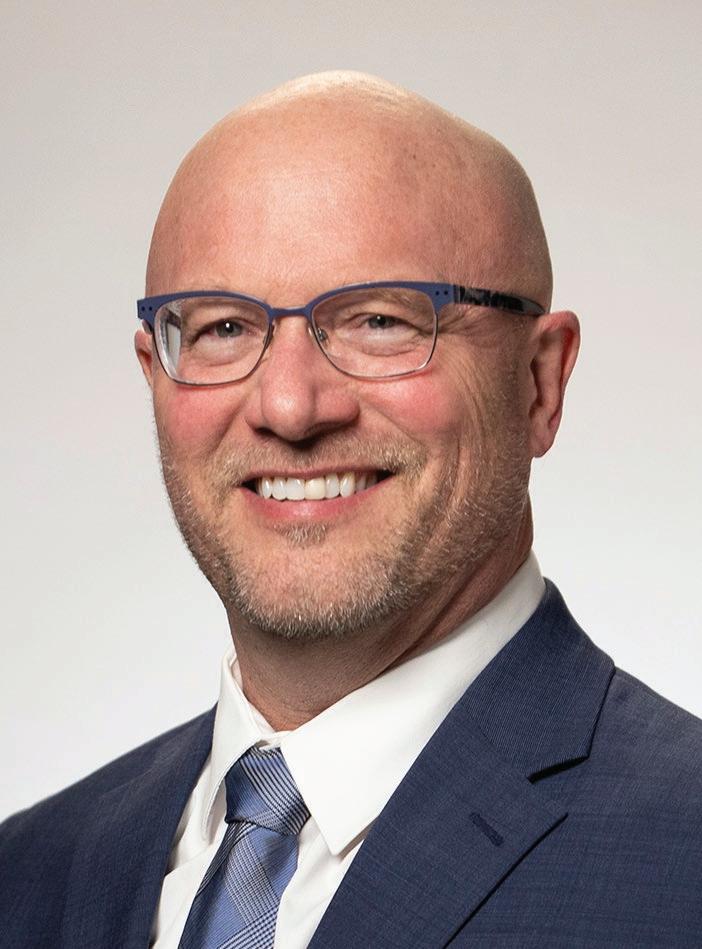
TYLER S. CONVERSE
Another example of utility/agency collaboration is currently underway, as Ohio’s resident lead expert, Jeff Swertfeger from Greater Cincinnati Water Works, is leading a utility workgroup that has routinely met with OEPA representatives to discuss and digest the requirements of the Federal Lead and Copper Rule Revisions (LCRR) and the proposed Lead and Copper Rule Improvements (LCRI).
We expect similar opportunities on the recently released PFAS regulatory requirements and the development of minimum Cybersecurity standards, among others.
I remind you all that there is so many easy and interesting ways to get involved and contribute to Ohio AWWA and the drinking water community. Committees such as Asset Management, Charitable Outreach, Competitions, Customer Service, Diversity & Inclusion, Distribution Systems, Ohio WARN, Source Water Protection, Technology, and the vibrant Young Professionals group all offer fantastic opportunities to contribute, grow your network, and develop as a professional. Please see the following link for a full listing and contact info so that you may step-up today: www.oawwa.org/committees.
I wish you all the best and hope to see you at the annual One Water Conference, August 5-8, in Sandusky, or one of the many other meetings, workshops and conferences being offered this year!

The Ohio Section AWWA Newsletter is published three times a year and distributed to all Ohio Section members. Highlights include Association news and updates, regulatory updates from the Ohio EPA, timely technical articles, and so much more.
Currently accepting article reservations for:
2024 Fall issue, and 2025 Spring, Summer and Fall issues
Deadline for technical content:
Spring Issues: February 15
Summer issues: May 15 Fall issues: September 15
Article Requirements/Topics
Length:
• Maximum of 3,000 words or six pages including graphics, whichever is less
Graphics:
• Multiple graphics are encouraged
• Hi-res 300x300 dpi or greater

Format:
• Articles should be formatted in MS Word and include graphic and photo locations. All graphics should be submitted as separate files, in the highest resolution possible.
• The newsletter committee will review the articles and approve the content. Revisions may be requested.
Topics:
• Utility Projects
• Research
• Industry Events
• Industry News
• Technology
• Innovative Utility Member Solutions (think Opflow Gimmick & Gadgets)
How to submit articles:
Send a request with synopsis of the article to oawwa@assnoffices.com
Technical articles should be submitted in a Word document file meeting the above criteria to oawwa@assnoffices.com.
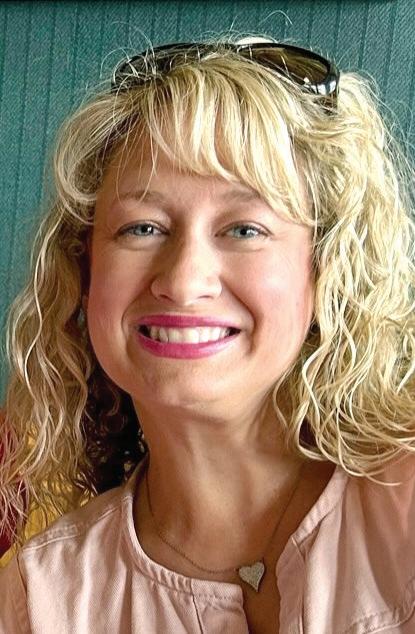
Valerie is the Superintendent at the Water Filtration Plant for the City of Warren, where she has been overseeing treatment, laboratory and maintenance operations over the last 17 years. She holds a Class IV Water Supply license and Chemical and Microbiological Laboratory Certification from the Ohio EPA. She graduated from

Youngstown State University with a Bachelor of Science in chemistry.
She is active within AWWA, serving on the Technical Program Committee, and has recently held the position as Treasurer on the Governing Board.
Valerie enjoys cooking, gardening, music, and sports. She loves spending time with her entire family, including her two children, Olivia and Mason.

Tim McCann is a Project Manager and Associate Vice President with AECOM in the Cleveland, Ohio office. Tim has over 23 years of experience in water treatment and distribution projects. Tim became actively involved in the Ohio AWWA in 2018 when he assumed the Treasurer role for the Northeast District. He holds a Bachelor of Science degree in Civil Engineering from Case
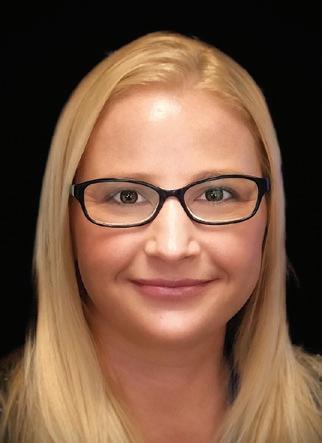
Annette Mollet is a seasoned GIS Coordinator at the City of Canton Water Department. She has ten years of experience in the water industry and is past chair of the Ohio AWWA Asset Management Committee. Her career is marked by a commitment to enhancing the functionality and efficiency of Canton Water Department’s GIS and computerized maintenance management systems. Annette’s expertise in designing databases and integrating complex data has significantly modernized the department’s operations. Her leadership in managing preventative maintenance programs and her innovative approach to automating quality control processes have earned her the Operator’s Meritorious Service Award from AWWA in 2023. In addition, she has a MSc in Geographical Information Sciences from Akron University.
Western Reserve University, and is a registered Professional Engineer in the State of Ohio. In his free time, he enjoys spending time on Lake Erie, following Cleveland’s professional sports teams, and spending time with his wife and four daughters.
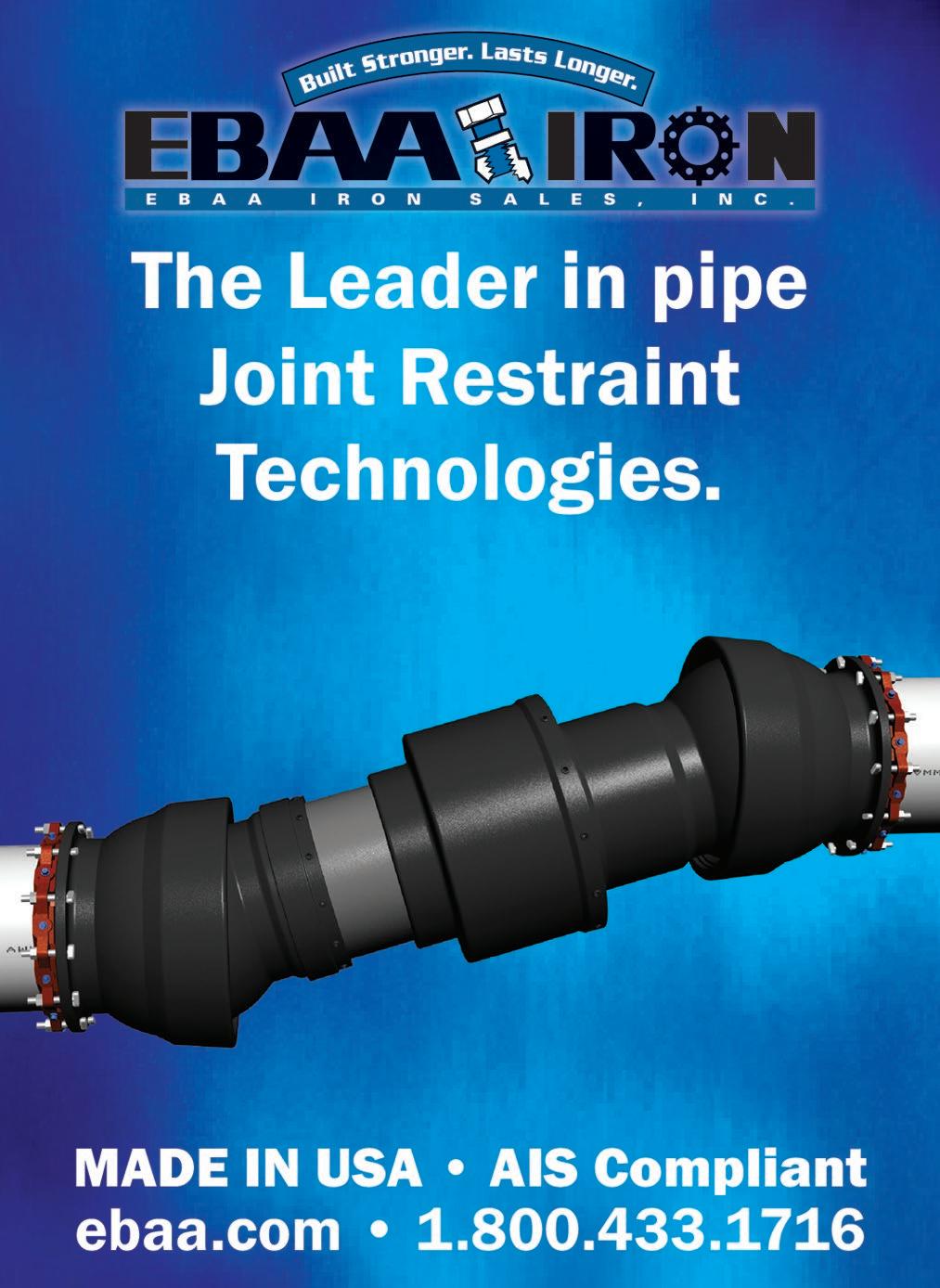


One Water Ohio is a joint effort between the Ohio Water Environment Association and the Ohio Section of the American Water Works Association to hold training events for Ohio's Water Professionals. One Water Ohio holds a four-day technical conference in the summer, attracting 1,600+ attendees and 200+ exhibitors, and a one-day Government & Regulatory Affairs Workshop each spring.
Kalahari Resorts & Conventions
700 Kalahari Drive Sandusky, OH 44870
MONDAY, AUGUST 5
• Golf Outing
• Lakeshore Clean Up
• Behind the Scenes Tour of Kalahari Waterpark
• Welcome Mixer
TUESDAY, AUGUST 6
• Kick-Off Breakfast with keynote speaker
• Exhibit Hall Open
• Technical Sessions
• OAWWA Competitions/OWEA Challenges
• OWEA Awards Lunch
• Exhibit Hall Mixer
• Meet & Greet Reception
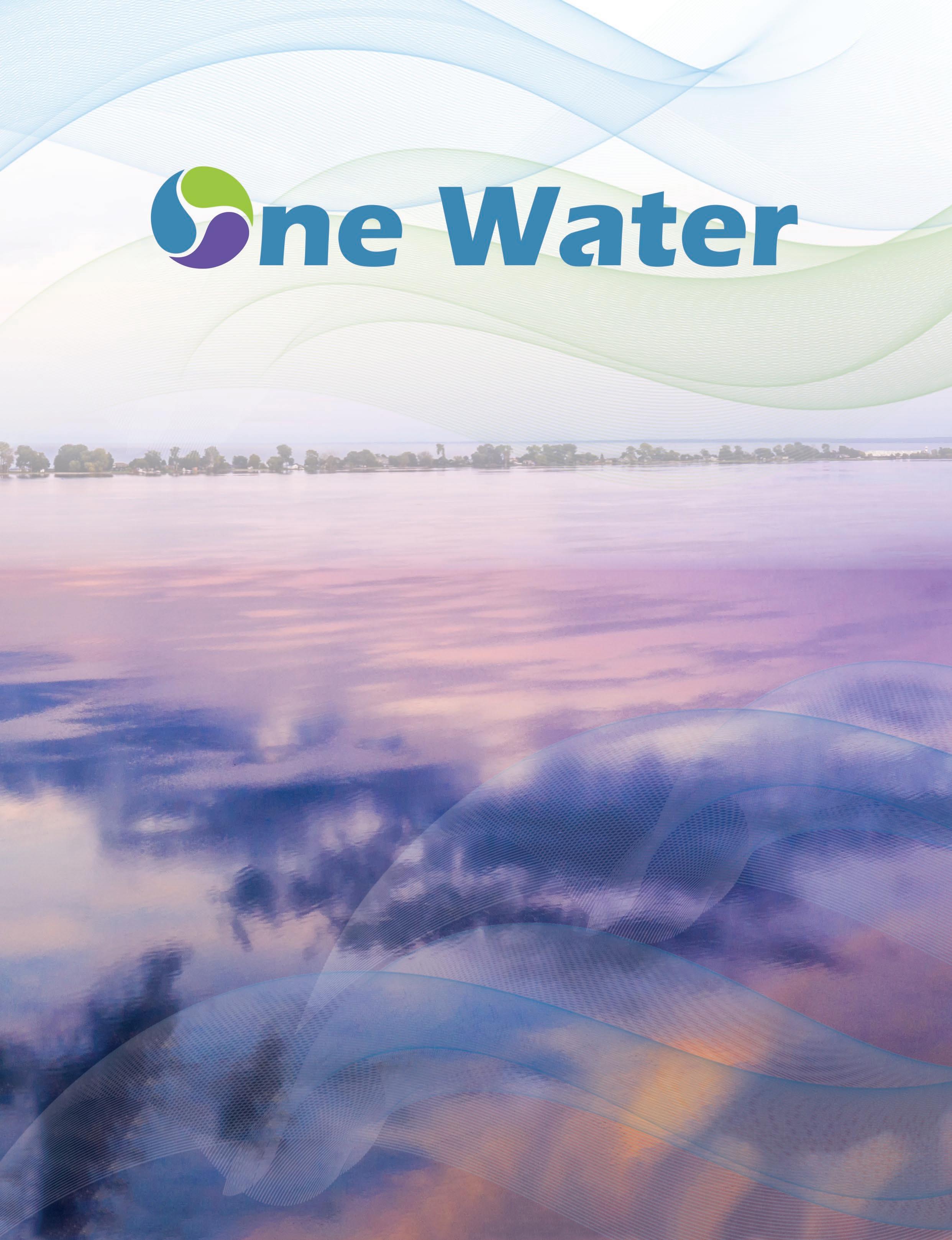
WEDNESDAY, AUGUST 7
• Exhibit Hall Open
• Technical Sessions
• OAWWA Member Appreciation Lunch
• OWEA Business Meeting
• Women’s Networking Event
• Happy Hour
THURSDAY, AUGUST 8
• Ohio EPA Updates
• Technical Sessions
• Ethics (2.0 hours)
Developing a Surveillance Response System (SRS) Online Monitoring Dashboard
Jenifer Howell, Greater Cincinnati Water Works

TUESDAY, AUGUST 6
Interstate Water Line Design
Kristopher Ruggles, Strand Associates and Justin Kuhbander, Strand Associates
The NW Ohio Water Workforce Coalition, Successes, and Challenges to Build Pipeline of New Operators
Kari Gerwin, Toledo Metropolitan Area Council of Governments and Chuck Campbell, City of Toledo
Collaboration
Delivers $125M of Improvements to Close a Sewage Treatment Plant
Charles Votava, Kimley-Horn
Workforce Development Programs as a Pipeline Between Neighbors and the Agencies that Serve Them
Crystal Davis, NEORSD and Galen Adams, NEORSD
Implementation of Ohio’s First Flow Augmentation System
Justin Waid, City of Wapakoneta and Chad Roby, Jacobs
Planning for the Implementation of a Large Scale PFAS Treatment System
James Christopher, Tetra Tech and James Brescol, Tetra Tech and Liz Zelinski, City of Dayton
IMET Wastewater Treatment and Reuse Technology
Kaan Gencer, IMET Corporation
Wilmington WWTP: A Blueprint for Delivering Affordable WWTP Construction in Today’s Marketplace
Eric Green, City of Wilmington and Jake Whited, Arcadis and Rob Knapke, Peterson Construction
A Fireside Chat with a Floodplain Whisperer
Mark Seidelmann, Stantec
Investigating Mono-Media GAC Filters for PFAS Removal
Jeff Kauffman, Del-Co Water and Andrew Heinmiller, Arcadis and Gwendolyn Kubacki, Arcadis
One Water Solutions are Emerging: A Reuse Roadmap for Industrial Areas in Central Ohio
John Sheets, CDM Smith and Michael Frommer, CDM Smith
Make sure to visit the exhibit hall!
SWLCWSD: Managing Explosive Growth in Distribution and Collection Systems
Josh Holton, SWLCWSD and Christina Sizemore, Arcadis
Assessing the Impact of Proposed PFAS Regulations on Water Affordability in Ohio
Jacob Gardener, The Ohio State University
How Machine Learning supports Lead and Copper Rule Improvements Validation of Service Line Materials
Costas Kontos, AECOM and Christopher Pawlowski, AECOM
Make sure to visit the exhibit hall!
Water 2050:
Charting a Course for the Future of Water
Tyler Converse, City of Canton
Make sure to visit the exhibit hall!
Understanding Manganese in Your Source, Plant, and Distribution System
Scott Moegling, City of Akron
Wastewater Process Simulators: A Powerful Tool for Treatment Operations and Design
Billy Fagan, Black & Veatch and Rob Smith, Black & Veatch
In the LSLR Trenches: Tips for Trying to Avoid (and Being Prepared) for the Worst that Will Happen
Brenda Culler, Cleveland Water and Joshua Pecek, Cleveland Water
A Trenchless Solution for Stabilizing the Buckling Brookside Culvert Mariss Giebel, Brown and Caldwell and Eric Dunn, Brown and Caldwell and C.J. Onyak, NEORSD
Make sure to visit the exhibit hall!
Not Your Typical Blueprint Columbus Project
Elizabeth Ehret, T&M Associates and Jeremy Cawley, City of Columbus
What is Sustainability & How Do We Do it?
Make sure to visit the exhibit hall!
Utility-Focused Sustainability for the Rest of Us.
Kevin White, Arcadis and Stephanie Weagraff, Arcadis
OH WARN
Emergency Response
Tim Truman, City of Dayton
Post Construction Monitoring Project for the Lower Mill Creek
Partial Remedy
Ashley Van Matre, Hazen and Sawyer and John Barton, Cincinnati MSD
Make sure to visit the exhibit hall!
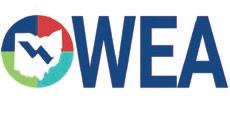
WEDNESDAY,

Old, Leaky and Hard to Access:
Rehabilitating a 100-Year-Old Water Transmission Main
Alan Stadler, Wade Trim and Matt Spronz, Cleveland Water
Make sure to visit the exhibit hall!
On-Demand Generation and Dosing of PAA for Wastewater Disinfection
Bruce Smith, USEPA and Dan Murray, USEPA
City of Newark’s Asset Management Fast Track
Sara Ferrara, Arcadis and Brandon Fox, City of Newark
Make sure to visit the exhibit hall!
Partial Denitrification Anammox (PdNA): An Overview and Feasibility of Implementation in Ohio
Brett Wagner, AECOM
Streamlining Digester Improvements and Lessons Learned from Design and CMAR
Sheamus Togher, Hazen and Sawyer and Patrick Ludwig, City of Dayton
Working in Ohio and Uganda: Cross-Cultural Lessons I’ve Learned from Working Overseas and Coming Back
Natalie Thompson, Hazen and Sawyer
Kari Mackenbach, ms consultants and Krystal Paisley, ms consultants 7:45 am – 8:30 am 7:45 am – 8:30 am
Planning for Intel Process Discharge at Southerly Wastewater Treatment Plant in Columbus
Joe Cook, City of Columbus and Bob O’Bryan, Black & Veatch
8:45 am – 9:30 am 9:45 am – 10:30 am 10:45 am – 11:30 am 11:45 am – 12:30 pm
Defiance Water Treatment Plant GAC Facility
Justin Batt, Stantec
Make sure to visit the exhibit hall!
Integrating GIS and Enterprise Asset Management Systems
Andrew Gerberry, Del-Co Water
City of Columbus DOSD
Sanitary Pump Stations
Evaluation & Upgrade Program
Luke Murry, GPD Group and Beth Hostetter, GPD Group and Troy Branson, City of Columbus
Make sure to visit the exhibit hall!
The Road to Sustainability for Rocky River WWTP Biosolids
Joe Sicurezza, Brown and Caldwell
Integrating Equity and Environmental Justice in Stormwater
Comprehensive Planning
Jenna Johnston, Environmental Collective of Ohio
Modeling Near Real-Time Chlorophyll and Other Parameters
Within Cincinnati’s Miller Plant
Patricia Klonicki, Greater Cincinnati Water Works
PDB Delivery in Challenging Times:
Montgomery County SMART
Jeff Macomber, Hazen and Sawyer and Renee Miller, Montgomery County Environmental Services
Make sure to visit the exhibit hall!
Tapered Liner Emergency Trenchless Rehab of a Large Hole and Void in the North Park Brick Sewer
Tanner Adair, AECOM and Kevin Alspach, AECOM
State of the Lake: HABs and Nutrients
Christopher Winslow, The Ohio State University
Preparing Your Plant for the Future: The Use of Pilot Testing, Pretreatment and Plates
John Civardi, Mott MacDonald
10-Year Anniversary for Multi-Purpose Filters
Jim Fitzpatrick, Black & Veatch and Gene Miller, Black & Veatch
How Data Driven Analytics Unraveled the Mystery of the Skyrocketing Watermain Break Rates
Kevin Campanella, Burgess & Niple
Case Study: Use Artificial Intelligence to Identify Flow Meter Anomalies
Jamie Persino, Trinnex, and Aaron Englehart, Trinnex
Recovery of High Strength Ammonia
Kayla Piezer, Applied Environmental Solutions
Columbus Municipal Composting Facility
Make sure to visit the exhibit hall!
Let’s Talk DEI: Moving from Plateau to Progress
Hasan Alkhayri, Hatch Associates and Drew Ater, Hatch Associates and Jesse Volk, City of Columbus and Josh Lutz, City of Columbus
Make sure to visit the exhibit hall!

WEDNESDAY,
2:30 pm – 3:15 pm 3:30 pm – 4:15 pm 4:30 pm – 5:15 pm
Dropping the pHat Beat: Composing the Optimal Coagulation Process
Valerie Copanic, City of Warren and Dane Elliott, Stantec

Smarter Sensing for Better Data: Biological Activity as Direct Indicator of Plant Performance
Alexandra Webb, SENTRY Water Monitoring and Control
AMI, CIS, MDM Water is the Foundation A Utilities Experience with Smart Metering Technology Upgrades Ken Crisp, City of Akron and Ben Roberts, City of Akron
Fairfield Ohio –Fulfilling a Smart Metering System: A Case Study
Adam Sackenheim, City of Fairfield and Mike Phillips, Master Meter
Innovative Approaches to Storm Sewer Condition Assessment – Columbus, OH
Alison Gale, City of Columbus and Matthew Kiefer, Arcadis
How Columbus Performed the First Multi-Sensor Fugitive Methane Study in the Western Hemisphere
Dante Fiorino, Brown and Caldwell and Tyler Schweinfurth, City of Columbus
Field Evaluation of Ultrasound on Algal Blooms for Mitigation
Kaiden Murphy, The Ohio State University
Navigating Consent: Akron’s Journey from Mandate to Proactive Sewer Management
Richard Thomas, Burgess & Niple and Jason Kline, City of Akron
Process Data Management: Empowering the Organization with the Right Insights at the Right Time
Ben Coyle, NEORSD and Jim Zupich, HDR
OWEA Student Design Project Student Presenter TBD
Decision-Making Toolkit to Evaluate PFAS Treatment Alternatives
William Rhoads, Black & Veatch and Jared Hutchins, Black & Veatch and Cheri Woody, Greater Cincinnati Water Works
Unique Pump Station Approach Adds Capacity, Reduces Overflows, and Minimizes Costs
Mark Upite, Burgess & Niple and Mike Tong, City of Lebanon and Chris Bowers, Burgess & Niple
Startups Never Go to Plan (But You Should Have One Anyway)
Christen Wood, Jacobs
Visibility and Insights: A Case Study of Integrated 3D GeoBIM Digital Twin
Jamie Decker, Hazen and Sawyer
Mitigating Lake Erie’s Harmful Algal Blooms: Machine Learning Models for Predicting Blooms and Phosphorus Reduction in Agricultural Runoff
Haiping Ai, Case Western Reserve University
Pilot Study Compares PFAS Removal Capabilities for GAC and IX Resin to Guide Full-Scale WTP Design
Ryan Capelle, Stantec
Managing a Successful Transition from a Design-Build Project to an Operating Plant
Shawn Hooker, AECOM and John Finnegan, AECOM and John Cleveland, Shook Construction and Randy Gilbert, Greene County
READY, SET, DONE: How an Innovative Approach Led to Fast Tracking a Project Schedule
Hunter Kelly, PRIME AE and Jehan Alkhayri, City of Columbus
Pump Design Bootcamp
Ted Bennett, Jones & Henry Engineers
PFAS Monitoring and Treatment for Wilmington's WTP
Jeff Macomber, Hazen and Sawyer
Behind the Curtain of Predictive Modeling for Service Line Inventories
Hannah Myers, Black & Veatch

THURSDAY, AUGUST 8
8:00 am – 8:45 am 9:00 am – 9:45 am
Ohio EPA DDAGW Updates
Amy Klei, Ohio EPA

Ohio EPA DSW Updates
Mark Johnson, Ohio EPA and Ashley Ward, Ohio EPA
10:00 am – 10:45 am 11:00 am – 11:45 am 12:15 pm – 1:00 pm
Flow of Understanding: Teaching Strategies to Advance the Water Industry
Alex Litofsky, OHM Advisors
It Takes a Village: Cook County, Illinois Lends a Hand in Lead Service Line Removal
Jeannie Krueger, Arcadis
Emergency Generators and VFDs Don’t Mix, Is That True?
Larry Stanley, ABB
What Do Young Professionals Want? How to Create a Culture that Young Professionals Want
Natalie Thompson, Hazen and Sawyer and Keith Rose, Greene County Sanitary Engineers
Preparing To Comply with The New Lead Regulations: Lessons Learned from Ohio Utilities
Jeff Swertfeger, Greater Cincinnati Water Works and Brenda Culler, Cleveland Water and Emilie Eskridge, City of Columbus
How Clarifiers Work
Robert Smith, Black & Veatch
Strategy in Practice: Overcoming Challenges and Leveraging Opportunities to be a Leader in Water
Glenn Marzluf, Del-Co Water
Leveraging an Inspection Program and Predictive Modeling to Develop an LSL Inventory for Jackson, MS
Brendan O’Brien, Stantec and Meredith Degner, Stantec
How Clarifiers Work
Robert Smith, Black & Veatch
Federal, State, Regional, and City Resources Combine with a Common Goal: Create a Better Environment
Brendan Ward, HDR and Brian Page, NEORSD; Lesley Gordon, HDR
Building Partnerships through Diversity, Equity, Inclusion, and Belonging Initiatives
Mia Mariotti, Wade Trim and Dave Cox, Wade Trim
1:15 pm – 2:15 pm 2:15 pm – 3:15 pm
Laws and Ethics of Using AI in Utility Operations and Management
James Cooper, Arcadis
Ethics in Engineering
Susan Willeke, Ohio Ethics Commission
A Changing Landscape: A Post-LTCP World and Other Hot Topics in Water Law Louis McMahon, McMahon DeGulis LLP



















Ohio Water/Wastewater Agency Response Network (OHWARN) is a network of utilities helping other member utilities to respond and recover from emergencies. We provide a method for utilities that have sustained or anticipate damages from natural or human-caused incidents can provide or receive emergency aid or assistance in the form of personnel, materials, services, and equipment from other water or wastewater utilities. OHWARN is one of a network of 51 WARNs across the nation. If needed we can reach
out to neighboring state warns to seek assistance. OHWARN has nearly 200 members in Ohio. These include non-utility organizations that are able to provide support to our members. These partner agencies include the Ohio EPA Ohio Emergency Management Agency, Ohio Rural Water, Ohio Rural Community Assistance Program, Ohio Homeland Security, as well as county emergency management agencies. May 27, 2019 was an extraordinary event in Ohio. There were 21 confirmed
tornados in the state, and 14 recorded in southwest Ohio. Two tornados struck Dayton – an EF2 and an EF4 –creating a power outage at the Dayton Water Facilities and massive damage to residential homes and businesses. This was the largest and most significant response Ohio WARN had conducted to date.
Dayton supplies water to 400,000 residents of Dayton and Montgomery County. The system consists of two 96 MGD treatment plants – the Ottawa WTP and Miami



WTP – supplied by the Mad River Well Field and Miami Well Field, respectively. Combined well field capacity is a total of 110 production wells with an average capacity of 2-3 MGD. The distribution system consists of four underground storage reservoirs, nine elevated storage tanks, and seven booster stations. Total distribution system storage is 88 million gallons with an average daily demand of 65 MGD.
The tornados downed power lines and destroyed the electrical substations supplying both Dayton’s primary and secondary electrical feeds to the Ottawa Water Treatment Plant, Ottawa Pump Station, Mad River Well Field, Miami Water Treatment Plant, Miami Pump Station, and Miami Well Field. At the time Dayton only had five portable generators and one fixed generator at a booster station. Up until this incident, power supplied to each of the treatment plants and well fields by separate substations for primary and secondary electrical feeds was sufficient redundancy to provide power during emergencies.
Just after 11:00 pm May 27 Dayton lost power at the Miami Water Treatment Plant complex including the pump station and well field, but also Ottawa Water Treatment Plant, Ottawa Pump Station, and Mad River Well Field that supplies Ottawa, and Westbrook Pump Station supplying City of Clayton. The Ottawa Water Treatment Plant was built to be gravity fed from the Mad Well Field two miles east of the plant. When the plant lost power there was no way to divert over 2 million gallons of water that was headed to the plant. The force

of the water breached the clear well access hatch in the lower level of the Water Treatment Plant, flooding the lower level and all the electronics and valve actuators in the filter pipe gallery in seven feet of water.
At 2:37 AM May 28, the initial OHWARN request for 300KW generators or larger was sent through the website portal. Dayton determined that each 300 KW generator can provide enough power two well pumps motors. Dayton also requested a 1.2MW generator for the Miami Pump Station to get water out to the distribution system. When a request for assistance is sent through the Ohio WARN website alert system it is broadcast to all OHWARN member utilities and partner organizations. This includes Ohio EPA Emergency Preparedness and Security office
and the Ohio Emergency Management Watch Office. This alerts both agencies to prepare for requests for assistance from the utility. Dayton staff also began contacting OHWARN regional coordinators and neighboring member utilities to request assistance.
By 4:26 AM, Montgomery County Environmental Services was delivering a 500 KW generator – the first of several generators to arrive to power wells. By 6:00 AM, Dayton had received confirmation from the City of Columbus they were sending two Generator Support Teams to supply temporary power. A generator Support Team consists of a generator, an electrician, a mechanic, and team leader. By 7:55 AM the City of Fairborn had delivered the first of two generators and Northeast Ohio Regional Sewer District (NEORSD) confirmed they were sending two Generator Support




Teams and a dump truck to assist with damage assessment and recovery efforts. The City of Columbus team arrived by 9:41 AM. Once on-site teams assisted Dayton Water electricians in connecting generators to production well pump motors.
Dayton Power & Light (now AES Ohio) restored power to the Miami WTP and pump station by 12:00 PM. At about the same time Dayton Water staff had completed dewatering the lower level of Ottawa WTP and begin damage assessment of the electronics. NEORSD electricians assisted Dayton Water’s electricians with damage assessment and repair of electrical systems at the plant. Through this monumental effort the Ottawa WTP was able to get back online within 36 hours of flooding. Since Dayton was without power, and staff were stretched thin, Ohio WARN
Regional Coordinators assisted Dayton Water by completing Cost Estimator sheets and Ohio WARN Assistance Request forms. Accurate documentation of resources, equipment, personnel time, and activities during an emergency is crucial when seeking reimbursement of costs from insurance and FEMA. Costs also need to be tracked to ensure proper reimbursement of utilities for their costs in responding to an incident. Ohio WARN Coordinators and Committee Chair kept in regular contact with Dayton staff to follow the progress of recovery efforts and ask if additional assistance was needed.
In all five Ohio WARN member utilities assisted with recovery efforts and helped restore water to the residents of Dayton and Montgomery counties within 36 hours of the tornado strikes. This would not have been possible without the assistance of


City of Columbus, NEORSD, City of Fairborn, City of Troy, and Montgomery County Environmental Services. Dayton also received assistance from Ohio EMA, Montgomery County EMA, and Union County EMA. These organizations sent personnel and equipment, such as electricians, mechanics, and operators with generators, utility trucks, and dump trucks to assist in recovery efforts lasting a week. There were other communities that offered assistance, but they did not have the resources Dayton required for this emergency.
• Ask for assistance from Ohio WARN early in the response. This allows utilities to take stock of their resources and their availability to help.

Reduces O&M Costs & Capital Expenses
Very Low Life Cycle Cost
Helps Protect the Environment
Prevents Corrosion
Rapid Trenchless Installation
As a result of the impervious nature of the SpectraShield Liner System, infiltration and ex-filtration is eliminated in structures. Operating and maintenance expenses are reduced, plant capacity is preserved, and plant expansion requirements may be delayed or eliminated.

As a result of the long life and competitive installation cost, the life cycle cost for the SpectraShield Liner System is very low. In many cases the ROI is under 24 months.
Groundwater entering the system is reduced, allowing more to percolate to the aquifer. Reduced pumping requirements reduce energy use reducing the carbon footprint. SSOs (Sewer System Overflows) are reduced as infiltration is reduced.
The Spectrashield Liner System provides a protective barrier that prevents H2S and moisture from reaching the surface of the structure.
The SpectraShield Liner System can be installed in a typical 7 foot deep manhole in about an hour without any excavation. The manhole may be returned to service immediately upon completion of the installation. An average sized pump station or wet well application takes about 2 days from start to finish. The pump station or wet well may be returned to service immediately upon completion of the installation.
Flexibility
Long Life
Versatile Experience
Cost competitive
The multi-layer SpectraShield Liner System is flexible, allowing it to handle the stresses associated with structure settling, traffic loading, and freeze thaw cycles.
The SpectraShield Liner System has a design life of 100 years and comes with a 10 year manufacturer warranty. The first structures lined in 1993 are still in place, and in good condition.
The SpectraShield Liner System may be used in a variety of structures, such as; manholes, lift stations, wetwells, large diameter pipes, box culverts, headworks, grit chambers, weirs, and package WWTPs.


Since 1993, in-house applicators, and trained certified licensees, have applied the SpectraShield Liner System in over 105,000 structures. Over 11 million square feet of the SpectraShield Liner System have been applied.
The SpectraShield Liner System installation cost is very competitive with all other liners and coatings.







• Be specific and give details when making requests for assistance through Ohio WARN. The AWWA Water Sector Resource Typing Guidance Manual can help guide you to the types and specifications of equipment and personnel you may need for your emergency. Instead of requesting just generators, the manual lists a Generator Support Team that includes electricians and mechanics, as well as a generator to connect and maintain the generator during the response.
• Ohio WARN Regional Coordinators assisted by completing documents like the Cost Estimator worksheet and Assistance Request Forms, as well as following up with emergency requests for assistance and helping to assess needs.
Through the single Ohio WARN Mutual Assistance Agreement (MAA), the City of Dayton’s Department of Water received mutual assistance from five communities. Without the OHWARN MAA, Dayton would have needed separate agreements with each community in place before the disaster in order to receive assistance. It’s important to note that mutual aid/assistance agreements and requests for assistance through those agreements are required for reimbursement from FEMA for equipment, services, and personnel overtime used during an emergency.
Ohio WARN needs you. We cannot continue our mission of utilities helping utilities without the involvement of our members. If your utility is not a member,



please consider joining. We are always seeking new members. Membership is free and member utilities are not under any obligation to provide assistance. However, if your utility has resources to help a fellow utility, please do so, as your utility may need help in the future. Visit our website at www.ohwarn.org for more information, and check out our Resources page. View our member utilities with the searchable Utility Directory. If your utility is a member, please attend a Steering Committee meeting by contacting us through the website or at info@ohwarn.org
for more information. We meet virtually on the first Monday of the month (except holidays) and in person quarterly. We are currently seeking Regional Coordinators for Northeast and Northwest Ohio for the Steering Committee. The Regional Coordinators represent utilities in their corner of the state and vote on Steering Committee matters, as well as assist utilities to find resources during an emergency. If you would like more information, contact us at the above email address, or contact Tim Truman, Committee Chair at tim.truman@daytonohio.gov.

AUGUST 5-8, 2024
Kalahari Resorts, Sandusky, OH
Lake Erie Water Plants Workshop
SEPTEMBER 10, 2024
Painesville, OH
Water Distribution Seminar
SEPTEMBER 13, 2024
Del-Co Water, Delaware, OH
OH YP Summit
NOVEMBER 15, 2024
Del-Co Water, Delaware, OH
NW District Fall Meeting
SEPTEMBER 19, 2024
NE District Fall Meeting
OCTOBER 17, 2024
SW District Fall Meeting
OCTOBER 18, 2024
SW District Process Pump & Seal Workshop
NOVEMBER 1, 2024
Cincinnati
AUGUST 3, 2024
Cleveland
SEPTEMBER 14, 2024
Columbus
OCTOBER 5, 2024


In early April the American Water Works Association (AWWA) hosted more than 150 water professionals from all over the country for the annual Water Matters Fly-In in Washington, D.C.
The Ohio Delegation from the state’s Section included Jeff Swertfeger (GCWW), David Weihrauch (H2O Compliance Strategies), Glenn Marzluf (Del-Co Water Company), Cliff Shrive (Shrive Operations Solutions), Robin Rupe (NEORSD), Tyler Converse (Canton Water & OAWWA Director), Rob Munro (Avon Lake Regional Water & WUC Vice Chair) and Sarah Van Frank-Affrunti (SWRWD & WUC Chair). Over the two-day event, the delegation met with all of Ohio’s Congressional offices from both the Senate and House of Representatives. The topics brought to the members included the need to:
Promote water affordability in local communities
• The authorization of a permanent program to assist low-income customers maintain affordable access to water, similar to existing energy, food, and housing programs.
Support the ‘polluter pays’ principle for PFAS clean up
• A liability exemption for water systems under the Comprehensive Environmental Response, Compensation and Liability Act (CERCLA), known as Superfund, in contamination events involving per- and polyfluoroalkyl substances (PFAS).
Invest in the nation’s water infrastructure
• Fully funding the Drinking Water State Revolving Fund and halting the practice of diverting funds from the State Revolving Funds to pay for congressional earmarks.
Support a collaborative approach to water cybersecurity
• A co-regulatory approach for cybersecurity for water systems to improve threat information sharing, support capacity development and provide funding to implement best practices.
Some of these issues have been discussed with Congressional members in previous year’s Fly-Ins. The timing of this year’s event was exciting though, as many of the topics the Ohio delegation were advocating for had legislative and regulatory actions taking place as we were on Capitol Hill. This was a unique chance to witness the hard work of water professionals supporting good policy-making and seeing a win for public water systems around the country.


In addition to the meetings with Congress, the opening session of the Fly-In provided an opportunity to celebrate the 50th anniversary of the Safe Drinking Water Act (SDWA) with a ‘Toast to Tap’. The SDWA has set strong water quality standards for the nation’s drinking water and established a regulatory framework to safeguard public health and safety of U.S. citizens. For those of us there, it was a special moment to reflect on how important our daily work is to the lives of our customers, our state and our nation.
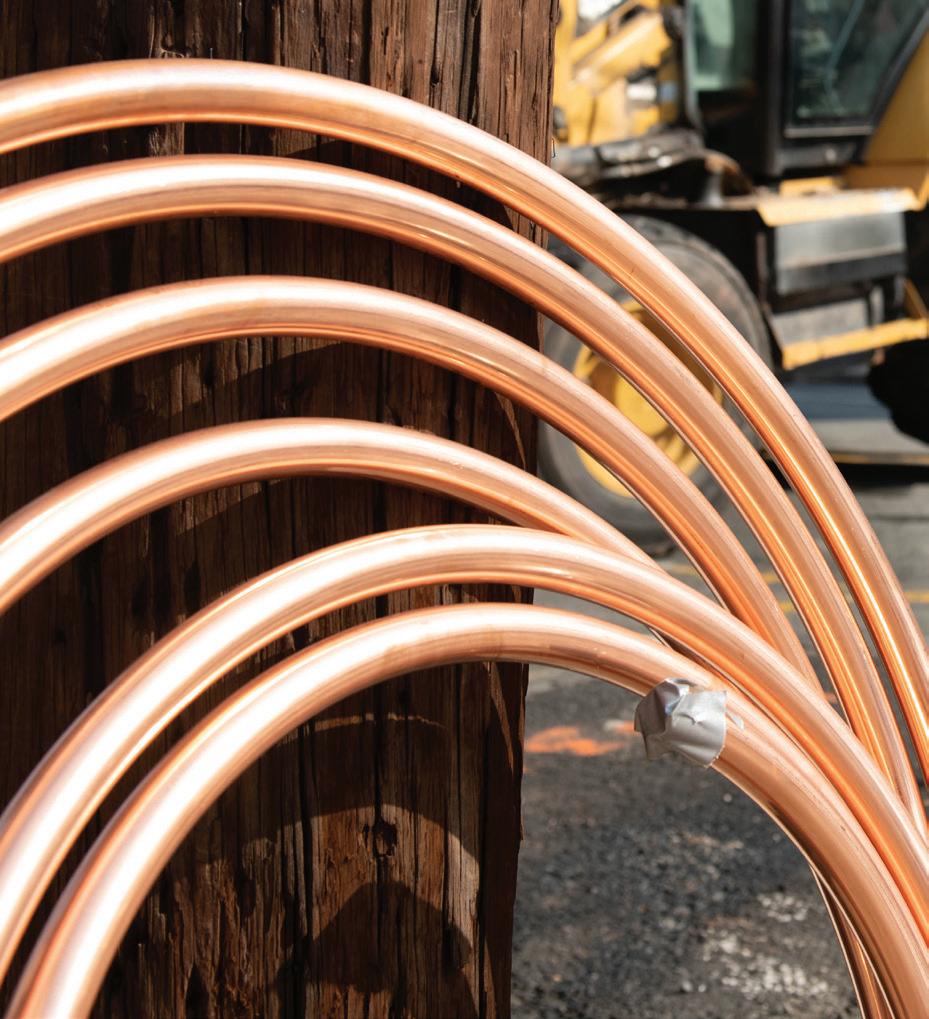






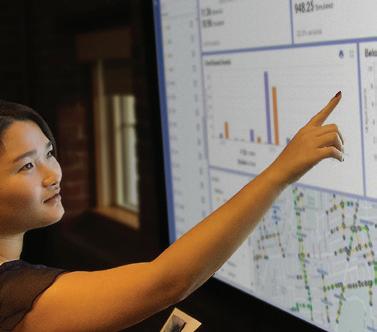










By AMERICAN



WHEN CUTTING-EDGE ISN’T A PHRASE, BUT OUR COMMITMENT. AMERICAN SpiralWeld Pipe is highly advanced. From engineering to a dvanced robotic welding to controls that ensure a perfect layer of coating, our technology means unmatched precision in every pipe we ship. In turn, that means years of unmatched performance from everypipe you install—with the data to prove it. Call AMERICAN today. Or, even better, tour any of our mills. And see why, with our pipe, the future has already arrived.














Edwina Teye, PhD
My current career is… Water and Natural Resources Program Manager with Mid-Ohio Regional Planning Commission (MORPC). I am responsible for managing relevant water and natural resources initiatives and projects in the 15-county MORPC service area, including water quality management planning, stormwater management, conservation, and stewardship education. I am also the staff lead for the regional collaborative forum focused on issues related to water supply, water quality, treatment, and climate change impacts. In my role, I work to elevate and enhance best practices, policies, and programs that advance sustainable water/stormwater management, conservation, and natural resource preservation in the region.
My MORPC Opportunity happened…
In the Fall of 2018, I moved to Central Ohio permanently from NW Ohio, where I was pursuing my doctoral degree. At that time, I joined the agency as a Water Resources intern responsible for supporting water quality management planning work or what is commonly referred to as 208 Planning for seven counties. A lot of that work involved data collection


and plan development around wastewater planning and provisions and my background as an interdisciplinary researcher came in handy. It was also a learning curve for me as I was not familiar with water and wastewater issues in Central Ohio. Challenging but it turned out to be a perfect learning opportunity. Today, I have the opportunity to manage programs that protect and conserve green spaces, stormwater management, improving quality of life through sustainable water resources management, climate and resiliency planning among others.
My Diversity & Inclusion Opportunity happened… Stacia Eckenwiler with Columbus DSOD made a plug for OAWWA Diversity & Inclusion Committee. I reached out to her about joining and happened to sit next to her at a meeting. She provided a lot of information about the committee and was keen to be a part of it.
Diversity & Inclusion in the Workforce…
We want to ensure that the work we are involved in both mirrors and impacts the people we are serving. In
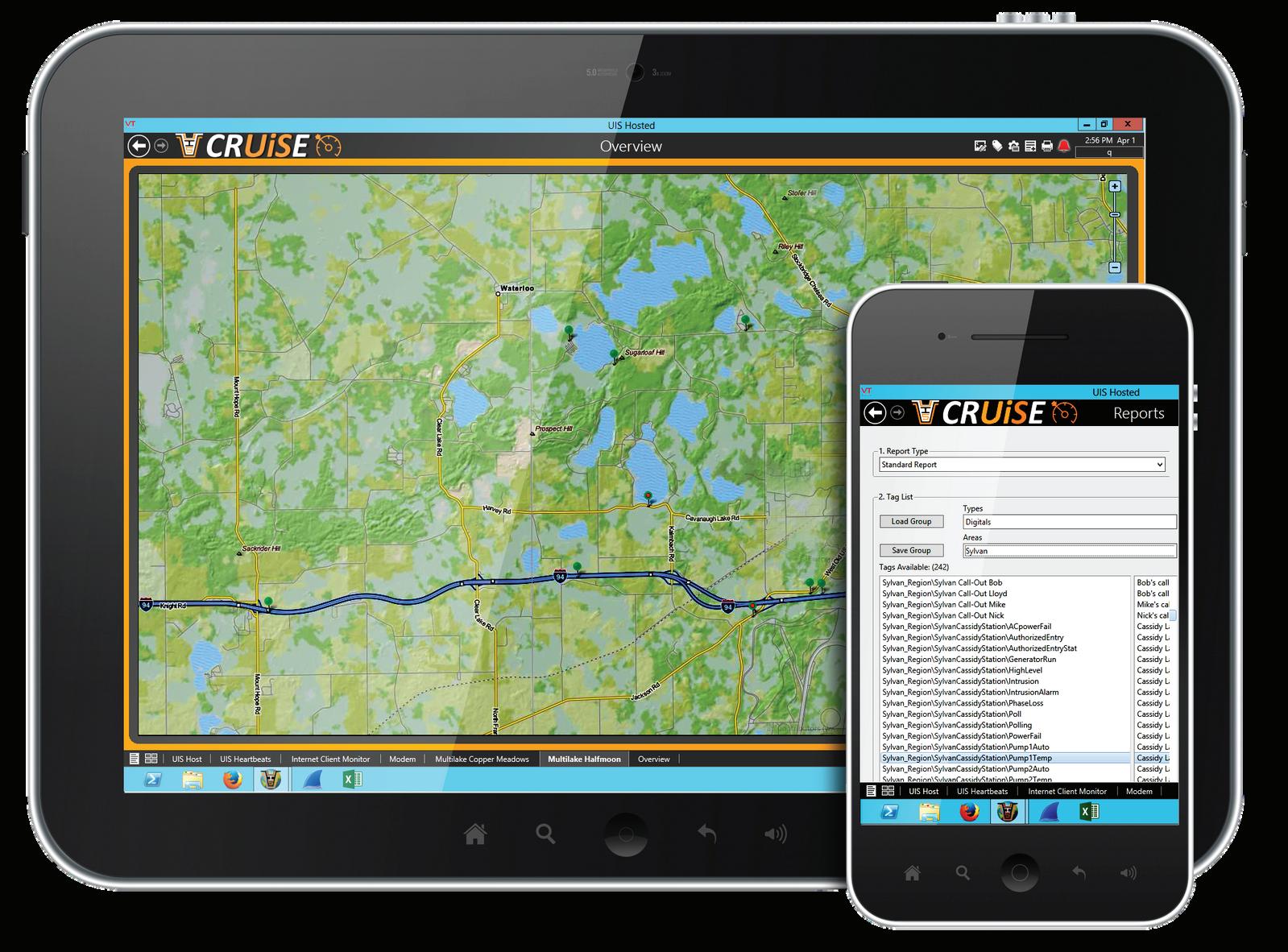




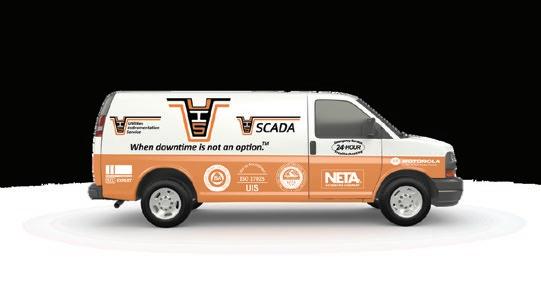

region of diverse populations. Working to advance and promote policies, practices and programs that improves the quality of life of our residents requires professionals that look like and represent the population we are serving. They offer their perspectives, share their lived experiences, and the context of their expertise is critical to the success of our work.
Over the next three decades, the Central Ohio region is expected to grow to a region of 3.15 million people. Racial and ethnic minorities will account for most of the region’s growth by 2050. MORPC reaffirms its commitment to DEI by addressing inequities through our programs and initiatives. We also promote various opportunities for historically underserved and underrepresented communities to provide feedback on projects, strategies, and initiatives, and to be actively involved in the planning process.
What does it mean to me…
DEI means programming that includes populations that could otherwise be excluded due to several factors, including accessibility. It also means providing resources and opportunities that increases our cultural competencies in the workplace, and enabling an environment that fosters curiosity to learn about other cultures.
In my role…

I can offer insights of my lived experiences, lead by example, provide opportunities, and create an environment for learning. I am constantly looking for ways to develop programming that elevates diversity in our region, that is inclusive and appealing to all, and also putting myself out there as a resource to share perspectives and as a conduit to pass on information to professionals in my field.
The Young Professionals Summit is an annual workshop put on by AWWA and WEF. The workshop aims to develop skills and leadership ability in young professionals in the water and wastewater industry through different workshops, speakers, and other interactive activities.
This year, the focus of YP Summit was to learn about emerging issues, connect with a diverse group of peers, and to challenge YPs to think critically about the present and future of the water and wastewater industries.
This year, the Ohio AWWA Section generously sponsored eight young professionals to attend the Young Professional’s Summit in Portland, Oregon from February 11–13.
From Josh Fuchs, Hazen and Sawyer “I’m very grateful to Ohio AWWA and the board for their continued investment in us young professionals. It’s amazing to see the impact that Ohio’s strong presence has made at the YP Summit, putting us on the map for both national AWWA and other state chapters. Our YP committee’s success in organizing events and promoting water industry engagement has a lot of people at the YP summit asking us for advice for their committee initiatives.
This year’s summit was another great one. In addition to leadership discussions, it covered essential soft skills like workforce development and important conversations about equity and affordability in the water industry. Plus, getting personal advice from national AWWA board members and leaders was invaluable. Some highlights for me this year included the YP alumni panel and the hands-on team competition where we got to assemble pipes and pumps. With this being my third opportunity to attend the summit, the best part for me every year is meeting enthusiastic peers from Ohio and beyond – that’s where I truly feel connected to the industry. I’m so thankful to be part of such an engaged YP group that helps us build relationships, and I love that our state chapter is so supportive.”

From Austin Prokup, Verdantas
“The YP Summit was filled with engaging conversations on pressing issues facing the water industry, not to mention great people (and coffee)! It helped me take a step back and appreciate the importance and goodness of the work we do, and the many challenges that lie ahead such as work-force shortages and cost-effectively maintaining aging infrastructure. I am thankful for OAWWA’s generous support in my continued development as a water professional.”
From Matous Becker, Arcadis
“I had an excellent experience at the YP Summit in Portland! Events included technical and leadership lectures, interactive workshops on challenges facing the industry, and even a hands-on team competition, similar to the Top OPS challenge that is performed at OneWater conferences. Oh, plus a LOT of karaoke singing (not part of the official Summit). I was able to network far and wide, and learn a lot about the upcoming problems in need of solving in the water industry. I also really enjoyed hearing how other AWWA Sections do things, including increasing operator participation and YP involvement. We as an Ohio YP Team are excited to implement several ideas that were brought up at the Summit, including a YP scavenger hunt at conferences, further collaboration with OWEA YP groups, and even bringing the YP Summit idea to the Ohio Section! I see the Summit as a huge value for the Ohio AWWA Section and for me personally.”
Anna Spinelli, Kleinfelder
“This was my first year attending a YP Summit, but more than that; the 2024 AWWA/WEF YP Summit was the first professional seminar I had ever attended. Being such a large gathering of people, I was terrified that it was going to be overwhelming, full of brilliant people talking about clever things, that I would be out of my depth. And I was, in the best way possible. The YP Summit and the leadership training the prior day constantly inundated me with new concepts, ideas, and technologies, as well as experiences and people from across the country. Soft skills, hard skills, it didn’t matter, there was just so much to learn, it took me nearly a week to decompress afterwards. That being said, that experience has been the best in my professional life.
The injection of new concepts, the interaction with so many younger engineers like myself, I feel has provided me a breath of fresh air. I can’t overstate the good that this event has done for me, and I can’t wait to attend next year.”
From Megan Patterson, Brown and Caldwell
“The YP Summit was an amazing opportunity to connect with other Sections and share ideas for future events and activities to improve the YP experience. We also met with industry leaders to learn more about and brainstorm solutions for current issues facing the world of water, including workforce development and diversity, equity, and inclusion practices.”
OAWWA Young Professional continue to support of the Ohio State Science Day by scoring the Earth and Environmental Sciences Category project for the AWWA Sponsored Awards. The projects are scored based on Relevance to the AWWA Award Theme, Creativity, Clear Use of the Scientific Method, Experient Design, References, and Writing and Presentation Skills. Each year our YP volunteers are impressed by the passion the students have for STEM. All State Science Day Projects can be viewed on the State Science Day website: projectboard.world/oas/home.
10-12
First Place – A Two-Year Study of the Presence of Microplastics Within Indian Lake, Logan County by Dylan Vance (Grade 11)
Second Place – Comparing the Amount of Bacteria and Heavy Metals in Two Types of Artificial Turf Infill by Jillian Medvecky (Grade 12)
Grades 7-9
First Place – Acid Mine Drainage Remediation by Norah House (Grade 7)
Second Place – The Golden Pipe by Annie Chaing (Grade 7)
Honorable Mention – Flood-Resistant Device for Trapping Trash Debris in an Agricultural Creek by Cora Gutierrex (Grade 9)
Honorable Mention –Science Day –Solar Power Salt Removal by Khloe Adams (Grade 7)
Grades 5-6
First Place – Does Color Impact Water Desalination Efficiency by Abigail Hilty (Grade 6)
Second Place – Plant Growth by Cenna Adams (Grade 6)
Are you a college student interested in learning more about the water industry or do you know one? OAWWA has generously sponsored a limited number of student memberships FREE to students who reach out to Megan Patterson at mpatterson@brwncald.com. Signing up is easy! What are you waiting for?
Jacobi Activated Carbon Tour – Late Summer 2024
Keep an eye on your inbox for additional details.
City of Akron Water Treatment Plant Tour and Happy Hour – Late Summer 2024
Keep an eye on your inbox for additional details. Joint Brewery Tour with OWEA YPs – Fall 2024
Keep an eye on your inbox for additional details.
When: November 15, 2024
Where: DelCo Wolf Water Center
Additional registration details will be emailed to the YP mailing list. Not on the YP mailing list? Email dane.elliott@stantec.com to be added – don’t miss this exciting event!
Are you interested in becoming a part of the OAWWA YP Committee? YP members are encouraged to join monthly YP Committee calls before committing to a role. Please email dane.elliott@stantec.com to be added to the meeting invitation and get involved! Current open committee positions include:
• SW District Co-Representative
• OAWWA Newsletter Committee Representative
• University Co-Representative
• Charitable Outreach Committee








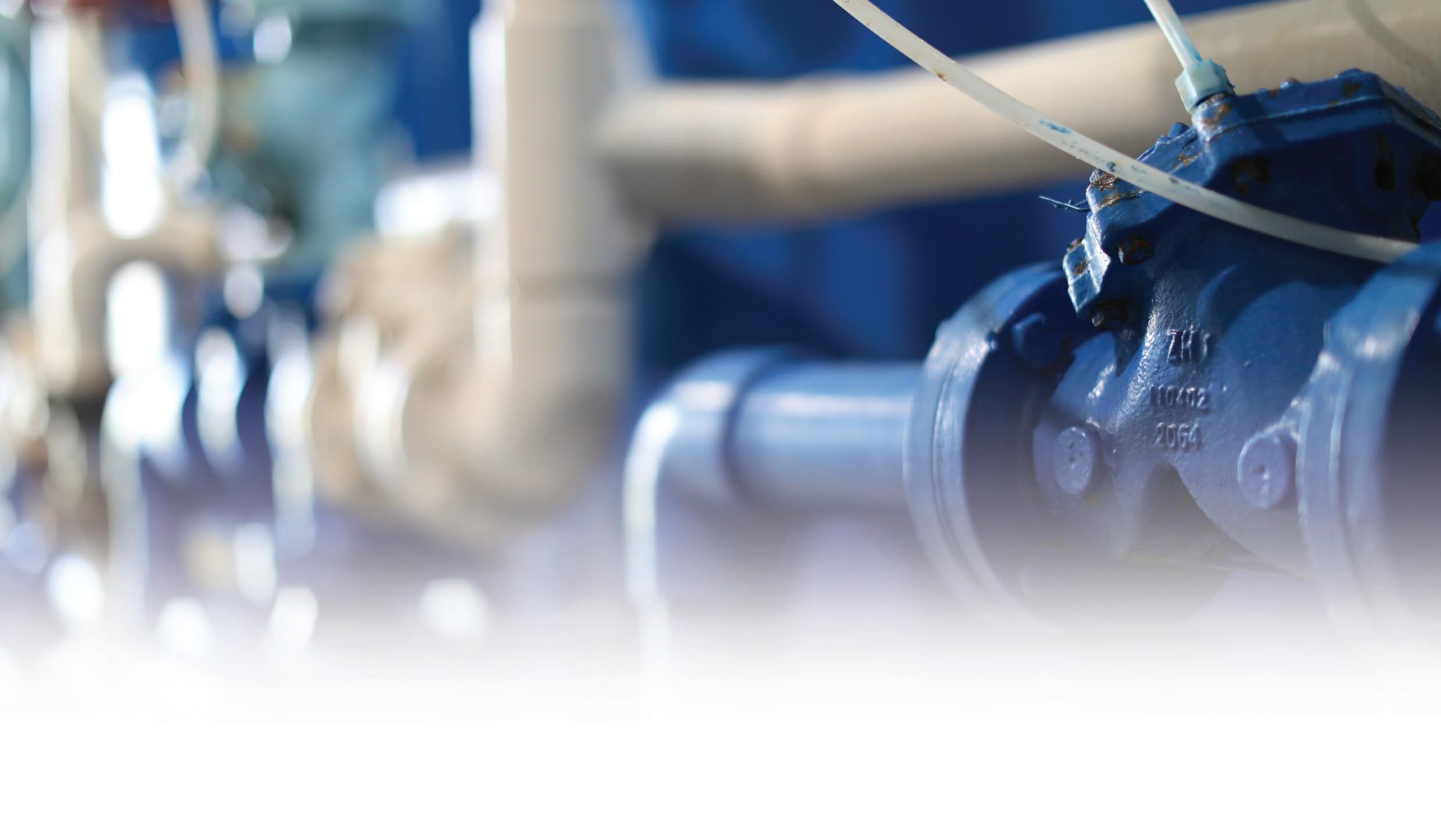
The City of Obetz, celebrated throughout central Ohio for its vibrant Zucchinifest, is a community where dedication and hard work shine, particularly within its Utilities Department. This department, a cornerstone of Obetz’s daily life, ensures the city thrives through its comprehensive management of essential utility services.
The Utilities Department is staffed by three full-time employees, all of whom are proud natives of Obetz, demonstrating a deep commitment to their community. These dedicated individuals, under the leadership of Utilities Superintendent Jordan Doll, alongside team members Shane Yockum and Brock McGuire, are instrumental in operating and maintaining the Obetz Water Plant, as well as the city’s water distribution and sewer collection systems. Their responsibilities also extend to assisting other Obetz divisions in maintaining the Lancaster Park Ice Rink,
managing snow removal, and caring for park and recreation areas, all of which contribute significantly to the city’s quality of life.
Central to Obetz’s utility infrastructure is the Obetz Water Plant, a groundwater treatment plant and vital facility established in 1955 that supplies around 30% of the city’s water. The plant has undergone several enhancements over the years, such as the addition of ion-exchange units and new filters in 1981, an operations
building update in 2009, and the installation of new controls in 2011. These updates have been crucial in ensuring the plant’s efficiency and reliability, demonstrating the city’s proactive approach to blending historical value with contemporary needs.
The Utilities team, despite facing challenges of aging infrastructure and the necessity for meticulous system monitoring, shows remarkable resilience and dedication. In instances where the plant’s capacity









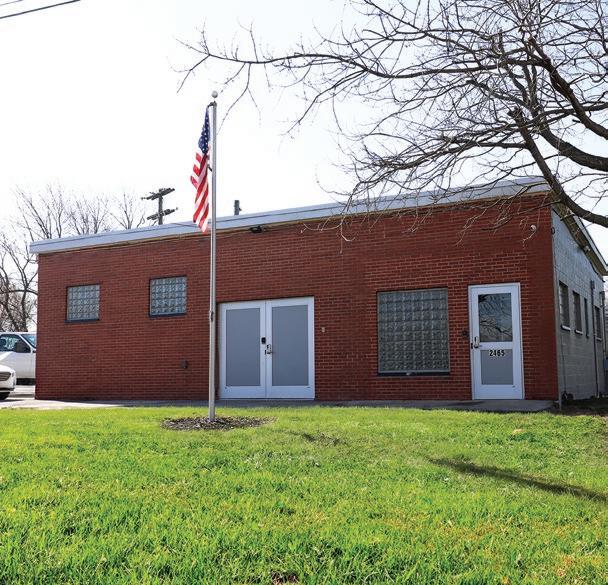


is temporarily reduced, the city strategically supplements its water supply from Columbus, a measure that underscores the team’s commitment to service continuity and community well-being.
The decision to continue operating the local water plant rather than fully transitioning to purchasing water from Columbus is rooted in a strategic financial choice that benefits the entire community. By producing its own water, Obetz can do so at less than half the cost of buying it from others. This significant cost efficiency enables the city to pass on these savings to its residents, effectively driving down the overall cost of water for the community. Maintaining
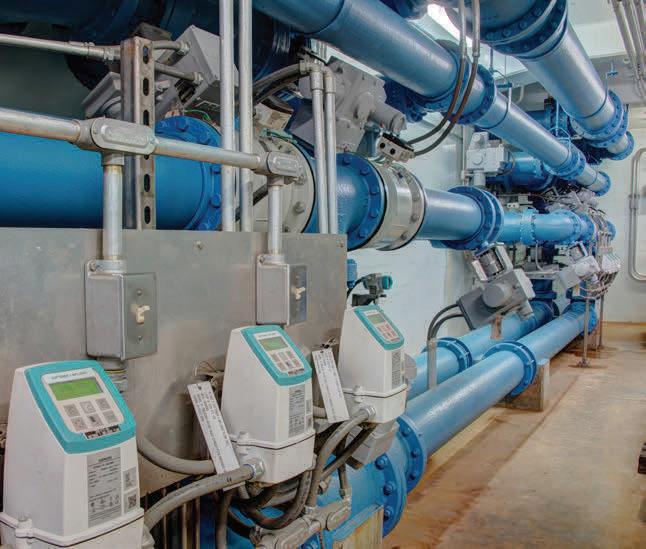


the Obetz Water Plant is not just a matter of local pride and autonomy, but a deliberate economic strategy that ensures water affordability for its residents, demonstrating the city’s commitment to leveraging its resources for the greater good of the community. Through this approach, Obetz exemplifies its dedication to sustainable, cost-effective service provision, ensuring that its citizens enjoy high-quality water services at a more accessible price point.
Beyond their technical duties, the Utilities staff embodies a spirit of community service, eagerly participating in snow removal, emergency repairs, and other civic needs. Their collaborative ethos is a reflection of Obetz’s overall community spirit, where departments and individuals come together to support and uplift one another.
Marty Ryan, the Public Works Superintendent, along with the senior leadership team comprising E. Rod Davisson, Esq., Director of
Public Works, Mike Corbitt, P.E., Director of Engineering, Todd Garwick, P.E., Director of Utilities, Daniel Carpenter, Utilities Manager, and Jordan Doll, Utilities Superintendent, all commend the Utilities team for their unwavering dedication. This small but mighty team operates and manages an impressive array of utilities for Obetz, including Water, Sewer, Natural Gas, Electric, and Refuse services, showcasing their versatility and commitment to the city. Their collective efforts, coupled with the camaraderie shared across departments, are pivotal in making Obetz a remarkable place to live and work.
In Obetz, the Utilities Department is not just a provider of services but a symbol of the city’s resilience, community pride, and the collective commitment that defines this exceptional community. Through their ongoing dedication and collaborative spirit, the Utilities team ensures that Obetz continues to thrive as a place of connectivity, shared responsibility, and vibrant community life.




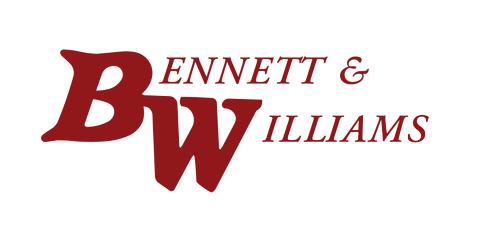


By Hayley Zimmerman
Ohio Administrative Code (OAC) Rule 3745-81-24(C)(5) requires that public water systems (PWSs) collect disinfection byproduct (DBP) samples under their “normal operating conditions”, which is defined in OAC 3745-81-01(N)(2) as “…the operational and treatment processes routinely used by a public water system which are representative of the practices under which water is typically delivered to consumers…”. The definition also provides examples of practices which would not be considered normal operating conditions. For the collection of DBP samples, “…deliberately flushing the distribution system just prior to the collection of samples…” is listed as a practice that would not be considered to fall within the parameters of this rule. Flushing just prior to the collection of DBP samples (within a two-week window prior to the required sampling time frame) would not be considered ‘normal operating conditions’ unless your public water system has a written standard operating procedure (SOP) for your flushing regimen that states that flushing is conducted on a routine basis that is more than monthly in order to keep the water system operating
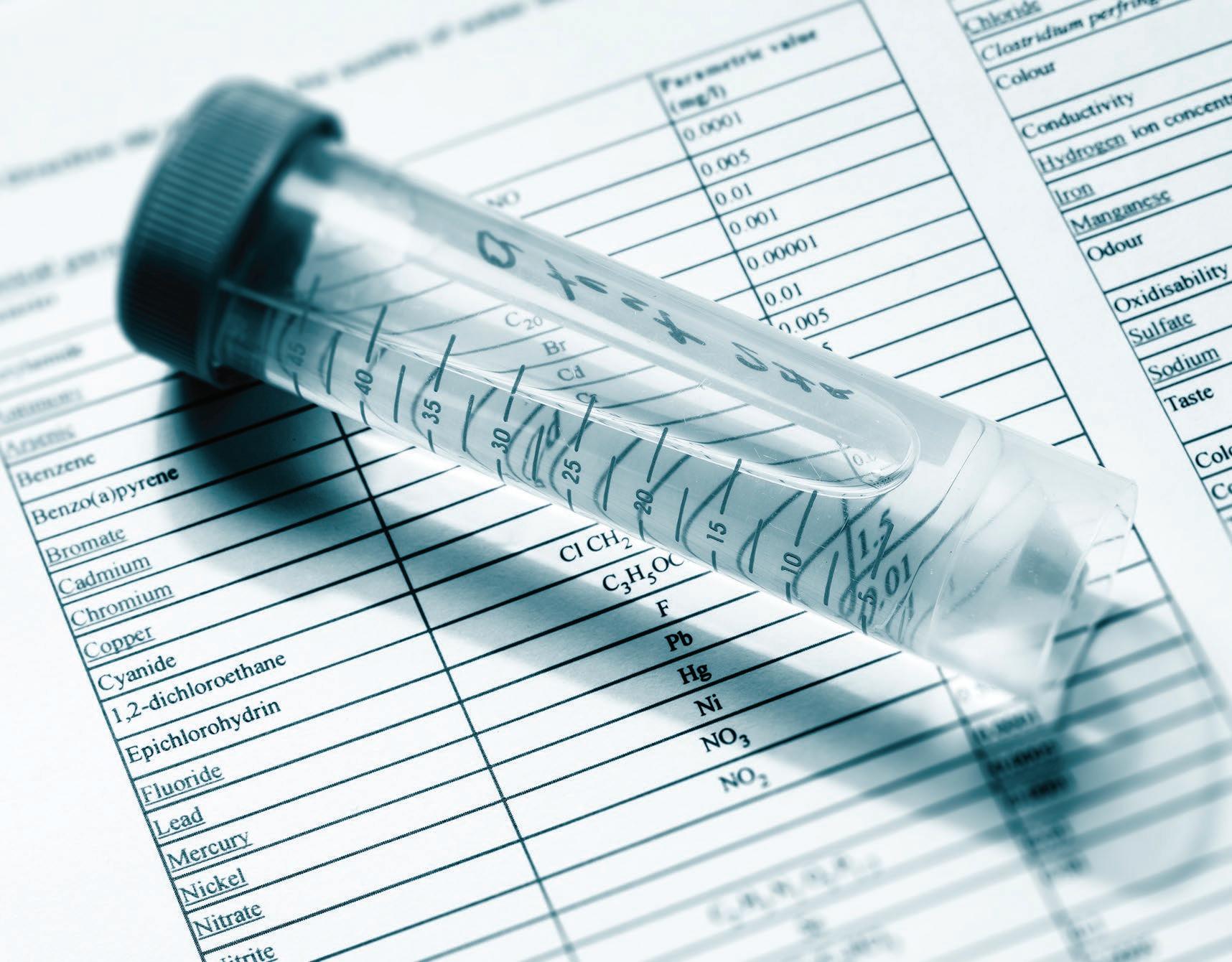
as required. Ohio EPA should also be made aware of such SOPs if they are created/utilized, and these should be submitted for review to your district office inspector(s).
Some PWSs are choosing to install auto-flushers within their distribution system. These are a great tool for systems to utilize to ensure that water quality is maintained throughout the distribution system while not having to manually flush. However, auto-flushers
should not be installed and tested and/or utilized prior to collection of DBP samples as well. PWSs should also maintain an SOP regarding the regimen in which these are being used.
If you ever have questions regarding drinking water sampling, contacts for each program can be found on Ohio EPA’s webpage at epa.ohio.gov/ divisions-and-offices/drinking-andground-waters/public-water-systems/ monitoring-and-reporting.









By Alexandra Haritos
Background
Although not naturally occurring in water, lead can be released from the corrosion of plumbing or distribution system pipes. Due to the potential for drinking water contamination, corrosion control is crucial in protecting public health. Once in the body, lead can cause several disruptions, including damage to the brain, nervous system, and kidneys.
Additionally, this element can displace calcium in the body, resulting in brittle bones. Lead exposure occurs primarily through ingestion, such as the consumption of contaminated water, soil or lead paint. Historically, lead was a popular choice for plumbing due to its malleability and strength, preventing accidental breakage. In 1986, an amendment to the Safe Drinking Water Act (SDWA)
established the definition of ‘lead-free’ as meaning a fixture contains less than 8.0% lead; this would be later reduced to 0.25% by weighted average in 2014. Later, on September 12, 1988, lead was officially banned in the Ohio Plumbing Code; however, it would be another three years before the first federal regulation for lead in drinking water was published.

In June 1991, the United States Environmental Protection Agency (U.S. EPA) published the Lead and Copper Rule (LCR) as part of SDWA. This rule applies to public water systems (PWSs) that are communities or non-transient non-communities (NTNC). Further, LCR established the Maximum Contaminant Level Goal (MCLG) for lead at 0 ug/L. An MCLG, although non- enforceable, is based on public health; thus, an MCLG of 0 ug/L indicates that there is no safe level for lead in drinking water. For enforcing the rule, the lead Action Level (AL) was set at 15 ug/L. This AL is the highest acceptable concentration of lead, based on both public health and reasonability of implementation. To ensure that ALs were not exceeded, monitoring schedules (routine lead sampling of PWSs) were established. Three monitoring schedules were available: every six months, annually (June through September), and triennially (every three years). Triennial monitoring requires an application, whereas PWSs are automatically moved to annual monitoring when applicable. In December 2021, Lead and Copper Rule Revisions (LCRR) were finalized, and this rule will be partially in effect on October 16, 2024. On that date, the Service Line Inventory (‘Initial Inventory’) must be submitted to Ohio EPA. The template is available on Ohio EPA’s website under Lead and Copper in Public Water systems. This inventory will require the use of records, to list all service line materials on both the water system side and the private side, even if there is no lead in the PWS. The materials can be Lead, LeadLined Galvanized, Galvanized, and Non-Lead. Additionally, if a galvanized line is currently or was previously downstream of a lead service line, it will need to be classified as galvanized requiring replacement (GRR). In Ohio EPA’s template, all columns in red are required; however, the expectation is

that all known information for each line will be listed on the inventory template. After the inventory is completed, Service Line Inventory Material notices must be sent to the people who have lead, GRR, and unknown service lines. These notices are required to be repeated annually for as long as they exist in the distribution system.
In November of 2023, Lead and Copper Rule Improvements (LCRI) were officially proposed. Compared to LCRR, LCRI will postpone school/childcare sampling, first and fifth liter sampling, and tiering changes. Additionally, PWSs with Lead, GRR, or unknown service lines will be moved to six-month monitoring for at least one year. On the compliance date for LCRI, estimated to be 2027, the Baseline Inventory and Service Line Replacement Plans will be due to Ohio EPA. The Baseline Inventory is a mandatory update to the Initial Inventory that includes water line connector material. The connector information must be found using records; if a record is unavailable, the connectors
can be listed as “unknown” and do not require visual identification. The Service Line Replacement Plans are detailed instructions that include: a PWSs’ guide for identifying and replacing service lines; a communication plan between the PWS and customers; written prioritization for replacement; a plan for funding replacements; and a list of any laws, regulations, or water tariffs that limit accessibility. U.S. EPA is also proposing the replacement of all lead and GRR service lines under a water system’s control within 10 years from the compliance date. These proposed requirements and more will help strengthen public health protections. U.S. EPA has projected the finalization of LCRI by October 16, 2024.
For more information about Lead and Copper Rule changes, please visit epa.ohio.gov/divisions-and-offices/ drinking-and-ground-waters/publicwater- systems/lead-and-copperin-public-water-systems or contact alexandra.haritos@epa.ohio.gov.
This inventory will require the use of records, to list all service line materials on both the water system side and the private side, even if there is no lead in the PWS.

AECOM
WATERFRONT is made possible by the companies below who convey their important messages on our pages. We thank them for their support of OAWWA and its publication and encourage you to contact them when making your purchasing decisions. To make it easier to contact these companies, we have included the page number of their advertisement, their phone number, and, where applicable, their website.
Auma Actuators, Inc. 16 724-743-2862 www.auma-usa.com Bell Mixing Systems
740-360-1916 www.icsbellmixingsystems.com
Bennett & Williams Environmental Consultants, Inc. 37 614-882-9122 www.bennettandwilliams.com
BissNuss, Inc. 7 330-533-5531 www.bissnussinc.com
Black & Veatch 18 614-473-0921 www.bv.com
Burgess & Niple, Inc. 30
800-327-1578 www.dixonengineering.net
EBAA Iron Sales, Inc. 9 229-273-7644 www.ebaa.com
Fishbeck 18 800-456-3824 www.fishbeck.com
Giant Maintenance & Restoration,Inc. 18 847-566-9188 www.giant2u.com
Gorman-Rupp Company
GPD Group
www.gormanrupp.com/en/gorman-rupp
Gripp, Inc. 33 317-896-3700 www.grippinc.com
Hawkins Water Treatment Group 6 877-839-3777 www.hawkinsinc.com
Hazen and Sawyer 6 513-469-2750 www.hazenandsawyer.com
HDR Engineering, Inc.
Induron Coatings, Inc.
614-839-5770 www.hdrinc.com
800-324-9584 502 548-2518 www.induron.com
Jacobs 39 614-888-3100 www.jacobs.com
Jones & Henry Engineers, Ltd. 16 419-473-9611 www.jheng.com
MASI Laboratories 39 614-873-4654 www.masilabs.com Pittsburg Tank 39 270-826-9000 www.pttg.com
Pro-Tech Systems Group 2 330-773-9828 www.pteinc.com
Ribway Engineering Group, Inc. 37 614-221-6009 www.ribwaygroup.com
Smith Comeskey Ground Water Science 37 419-235-4955 www.groundwaterscience.com
SpectraShield Liner Systems 22/23 303-378-1101 www.spectrashield.com
Strand Associates, Inc. 36 608-251-4843 www.strand.com
Sullivan Environmental Technologies 16 859-426-5178 www.sullivanenvtec.com
The Bergren Associates 7 419-843-2170 www.bergren.com
The Henry P. Thompson Company 44 513-248-3200 www.hpthompson.com
UIS SCADA 29 866-439-9660 www.teamuis.com
VEGA Americas, Inc. 3 513-272-0131 www.vega.com


There’s nothing quite like working with others to find solutions to shared challenges. AWWA members are a community of water professionals who are dedicated to the world’s most important resource. In member value surveys, respondents state that connecting and collaborating with others in the industry is the primary reason they are a member.


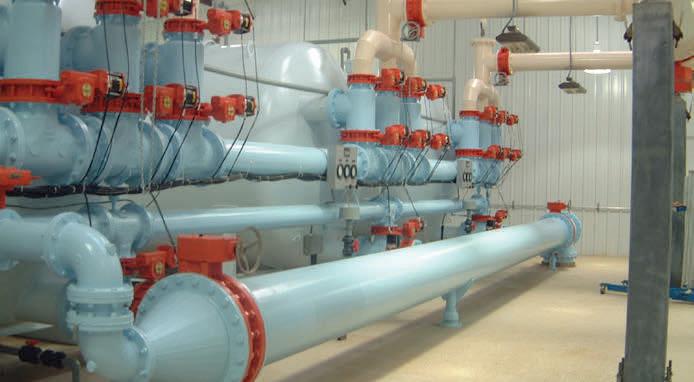


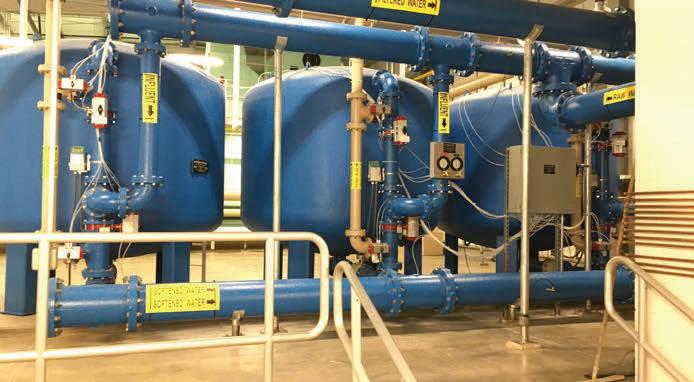



Tonka Water, a Kurita brand, has been dedicated to meeting the potable water needs of public water systems across North America since 1956. As part of Kurita America, Tonka Water remains a trusted brand in municipal water treatment with over 2,700 installations. We are dedicated to understanding your specific needs to customize designs that deliver the optimal solution for each application.
We offer the products and services you need to maintain your system and extend equipment life to get the most out of your investment. This includes hard-to-find parts, troubleshooting assistance, and refurbishment packages. Our experienced field service professionals offer on-site support based on your current need or as part of an extended service contract. Contact our aftermarket services team for the support you need. Our water treatment experts are ready to help.
Visit Us at the One Water Conference
Join Tonka Water from August 5 – 8, 2024 in Sandusky, OH, at The Henry P. Thompson booth.
a Kurita brand
